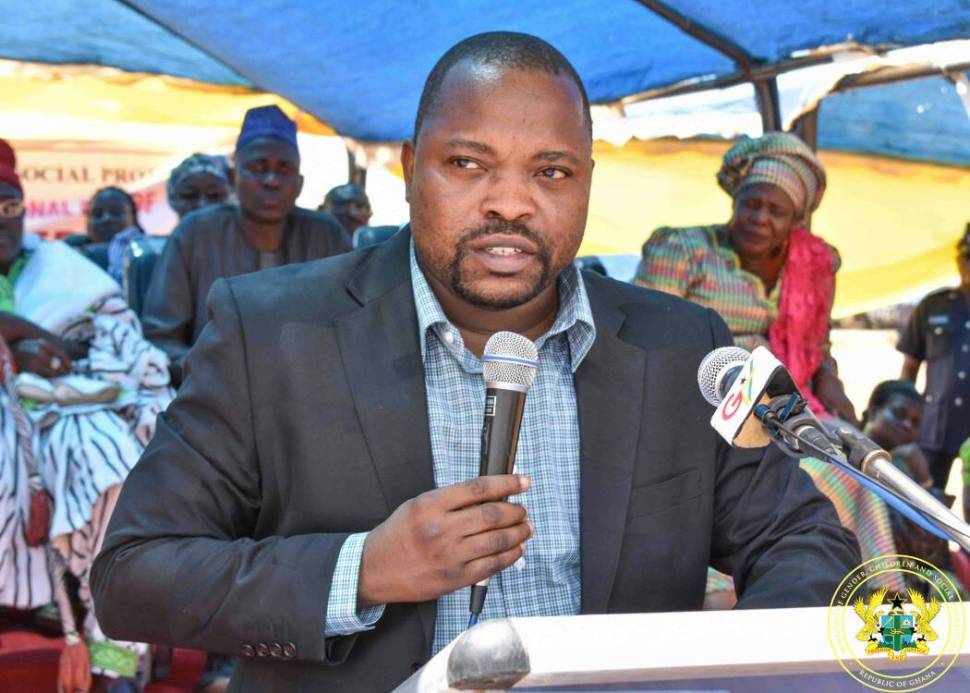The National Coordinator of Ghana National Household Registry (GNHR), Dr Prosper Laari has defended survey findings by his outfit that declared Garu District in the Upper East Region as the poorest.
The survey which was conducted by the GNHR in 2018 declared Garu District as extreme poorest District in the region with 42.02 percent.
According to the survey, 184,125 households in the region were registered out of which 28 percent households were categorized as the most extremely poor, 37 percent were poor whereas 35 percent were non-poor households.
However, a Development Expert in Bolgatanga, Reuben Jagri Binpori (MPhil, BSc) in a statement critiquing the survey, described the GNHR data as superfluous, misleading, and at variance with Ghana Living Standards Survey (GLSS) 7 and other existing evidence.
After the publication of his statement on A1Radioonline.com, the management of the GNHR has swiftly responded and strongly defended their methodology used in carrying out the survey and outcomes of same.
In a rejoinder issued by Dr Prosper Laari and copied A1 Radio, the GNHR, said though they have issues with some aspects of the criticisms by Mr. Binpori, they also commend him for raising some points that have enabled the registry to throw more light on the methodology used in survey.
BELOW IS THE REJOINDER
Re: UE/R: Dev’t Expert challenges GNHR Survey that declared Garu District as extremely poor District – A1 RADIO 101.1MHz
“GNHR DATA CREDIBLE AND VALIDATED FOR NATIONAL USE”
In the said publication, Mr. Reuben Jagri Binpori, indicated among others, that the data from the
GNHR appear superfluous, misleading, and are at variance with GLSS 7 and other existing evidence. It is not out of place to challenge the results disseminated by GNHR as it is within the right of every individual but to say it is superfluous and awful demands that the GNHR to also state its position and context clearly.
At least we must commend our Mr. Binpori for raising some points that has enabled us throw more light on the methodology used in this exercise. First and foremost, I would like to state emphatically that the GNHR is not a monitoring database as suggested by the radio station. The
GNHR is a unit under Gender ministry that is mandated by the Government of Ghana to identify and classify Households as extreme poor, poor and non-poor. In doing so, the GNHR creates a single database of all households who fall under the extreme poor category to be eligible for social intervention programmes.
Mr. Binpori also suggested in his publication that the GNHR Data collection exercise is a duplication of Ghana Living Standard Survey being conducted by the Ghana Statistical Service.
The GNHR does not duplicate efforts of any state agency; it rather eliminates duplication of efforts of Ministries, Departments and Agencies in targeting beneficiaries for social protection
programmes in the country and thereby significantly cutting cost in the process.
The GNHR fully collaborates with Ghana Statistical Service (GSS), Information Service
Department and the National Identification Authority and to an extent, the Electoral Commission throughout the process of its data collection exercise. As a matter of fact, the GSS validated the results of the exercise carried out by GNHR after a spot check in 2018.
As much as I agree with his assertion that poverty is calculated based on a person’s income and how much he or she can buy with that income, the major constraints in developing countries such as ours is how to effectively verify the incomes of Households. That is why the GNHR uses
a household evaluation mechanism based on a Proxy Means Test (PMT) model to classify households into extremely poor, poor, and non-poor. In this model, welfare is determined using indirect indicators, which collectively approximate the socioeconomic status of individuals or households. The PMT is the most widely used means test in developing countries and consists of collection of observable household features which are weighted and used to calculate a score that indicates the household’s socioeconomic status. It important to state that the instrument used is based on the latest GLSS at any material moment by GSS. Scholars all over the world have recommended the use of the PMT for collecting socioeconomic data in developing countries because it is most suited for countries with a large informal sector, with no formal information on income and most importantly eligibility is based on easily observable indicators,.
According to the GSS poverty map, Garu Tempane, with a poverty incidence of 54.5 percent, has the highest number of poor persons (70,087) in the region followed by Bawku West (63,315) and Bongo (56,622). Though Builsa South has the highest poverty incidence of 84.4 percent, the population poor is 30,730. This therefore does not deviate from GNHR results though it is not mandatory to have same results if not conducted at same time with same methodology. Much as poverty was generally halved in the country as of 2013 the GLSS 7 showed Poverty reduction between 2013 and 2017 was marginal (0.8 percentage points)”. Richer regions experienced poverty reduction over 4-year period, whiles poorer regions did not. The three northern regions recorded higher and rising poverty rates. Unemployment was in context “the number who had something significant to do that earned them income within the last one year”. You cant compare this with a proper labour analysis but to reveal significantly that more people are not into active jobs as of that time 2018. The GNHR however did one round of data collection and results not different from national outlook though it must be stated that indicators used by reason of the social protection differed. GNHR carried out total census and not a survey or monetary quantification of food and non-food items as in the case of GSS but proxies. The results so far from the two regions completed by GNHR still shows Upper East having a lower extreme poor category than Upper
West Region which on the same baseline typifies the GSS overall outlook. The issue of these ranking and scores must be placed in the proper context of categorizing these households according to extreme poor,non poor and poor. The latest GLSS 7 shows widening poverty gaps in the five regions of the North but this data as of 2018 shows the situations which has been disaggregated into Districts and is a true reflection of the situation on the ground. These results can therefore not increase poverty or widen it except you have more than two same scenarios or rounds to compare.
These results, therefore complements, all other results already provided by literature and must be situated in the right context for meaningful analysis.
Dr. Prosper Laari
National Coordinator
GNHR
Source:A1radioonline.com|101.1MHZ|Ghana


